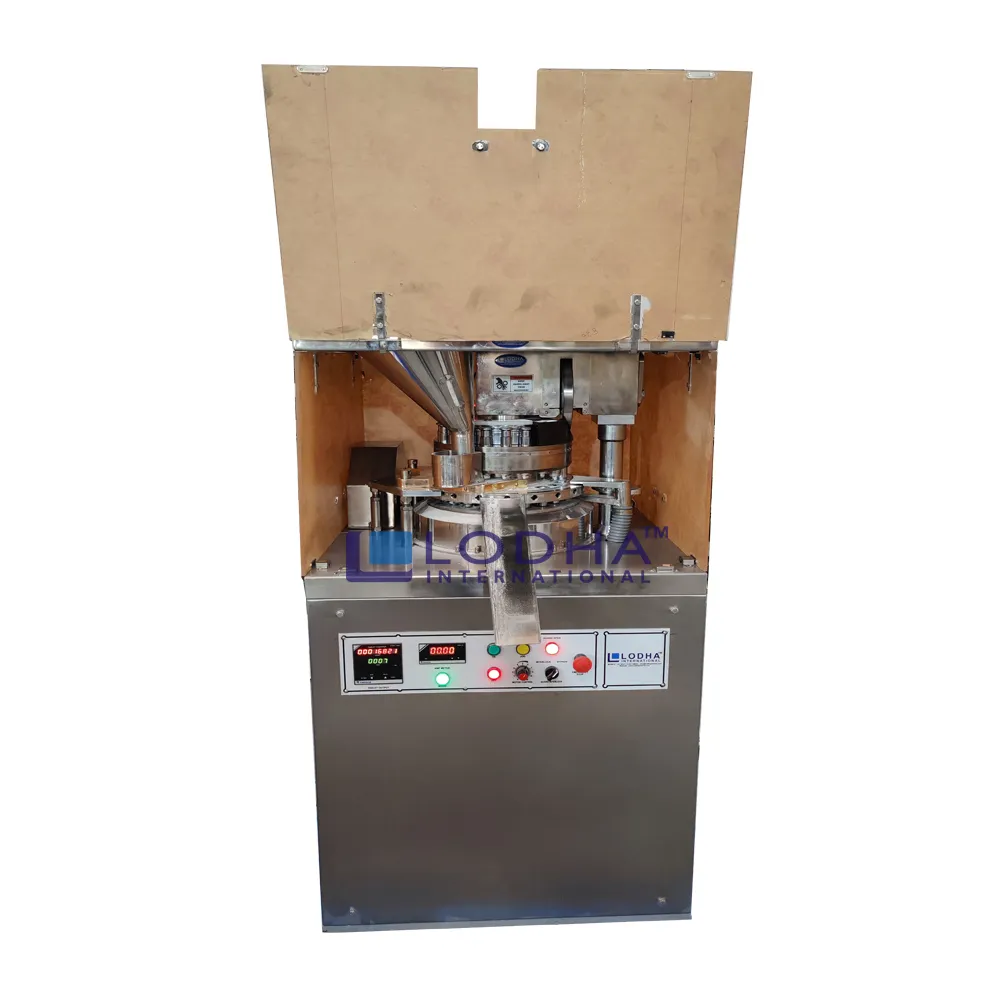Get in touch! +91 9687731331 | +91 9687631331 | info@lodhapharma.com
An Overview of the Tablet Compression Machine
There are many aspects that determine the performance of a Tablet Compression Machine. The main components are the Die cavity and Precompression rollers, which exert enough force to compress the granules into a tablet. The Ejection cams are also an important aspect of the Tablet Compression Machine. If you are considering investing in one, you need to know more about the equipment used in tablet compression. The following article will provide you with an overview of these important features.
The Die Cavity Determines the Thickness and Size of a Tablet - Tablet Compression Machine
A multiple-station tablet press is a complex machine that uses compression to form tablets. It consists of multiple sets of punches and dies, which are aligned horizontally. The material to be formed into tablets is fed into a fixed hopper or a frame. As the die table rotates, these tools fill various dies. The final thickness and size of the tablet are determined by the die cavity.
The diameter of the die cavity and the amount of fill that is allowed into the die cavity determine the thickness and size of a tablet. These variables, in turn, determine the compaction characteristics of the fill material and the amount of force applied during compression. All of these factors should be controlled to produce uniform tablets of uniform thickness.
Tablet Compression Machine - Precompression Rollers Exert Sufficient Force to Compress Granules
Precompression rollers exert force on the granules before they are compressed by the main compression roll. It keeps the granules stable throughout the process, resulting in uniform tablets of the same thickness and size. After the main compression rollers, the lower punch moves up and out of the die cavity by means of a cam track. A tablet scraper is located in front of the feed frame and pushes the compressed tablets up through the die cavity to the discharge chute or collection drum.
Tablet compression involves the application of force and air to the granules. Precompression rollers are usually smaller than the main compression rollers. The size of the precompression rollers may vary according to the material to be processed. The Precompression force is higher for elastic and brittle fracture powders. The gradual application of force allows for elastic recovery. The main and precompression rollers should be similar in size to achieve optimal tablet formation.

Ejection Cams are Critical Aspects of a Tablet Compression Machine
The die frameworks, ejection cams, and take-off blades of a tablet compression machine are critical to the process. These components fix the tablets inside the cavity of the die and direct the compacted tablet out through the release chute. In addition, the die frameworks are made from tough abrasion-resistant materials. High ejection forces can lead to premature wear and tear of the press parts, as well as poor-quality tablets. To remedy the problem, manufacturers typically add extra powdered lubricant to the blend.
The main compression rollers exert pre-determined amounts of force on the tablets, ensuring uniform size and thickness. The main compression rollers must also be stable throughout the entire process. After the compression rollers, the ejection cams guide the lower punch upwards. This cam is fitted in front of the feed frame. The ejection cams are critical aspects of a tablet compression machine.
Types of Tablet Compression Machine
There are two main types of tablet compression machines: single-punch and multi-punch. Single-punch machines are smaller and easier to operate. They can also produce odd-shaped tablets. They are generally equipped with a high-pressure system that minimizes variations in weight between different batches. Several features of single-punch tablets make them a good choice for small-scale production and development. Single-punch presses are also designed to maintain a low noise level.
The Bottom Line
A tablet compression machine includes a hopper for granules or a powder mixture that needs to be compressed into tablets. The lower punch is guided upwards into the die cavity by a feed paddle. The upper and lower punches move within the die bore and are designed to compress the granules into tablets. Both of these components are governed by a cam track that allows the upper and lower punch to be adjusted precisely.

